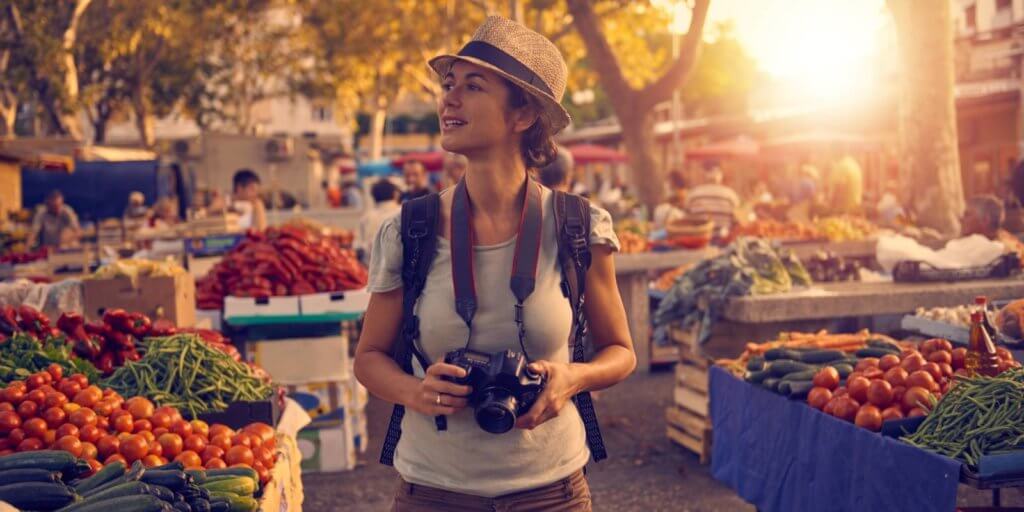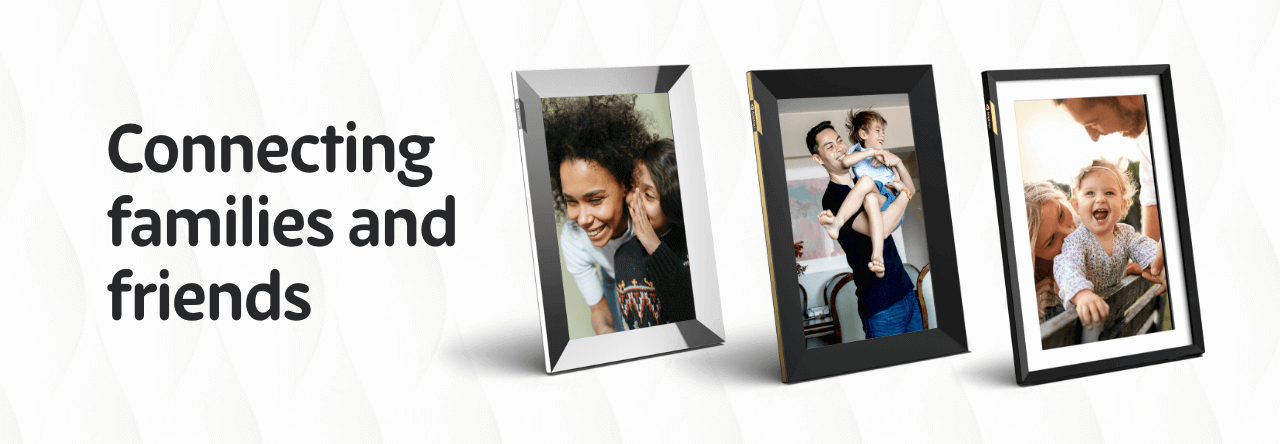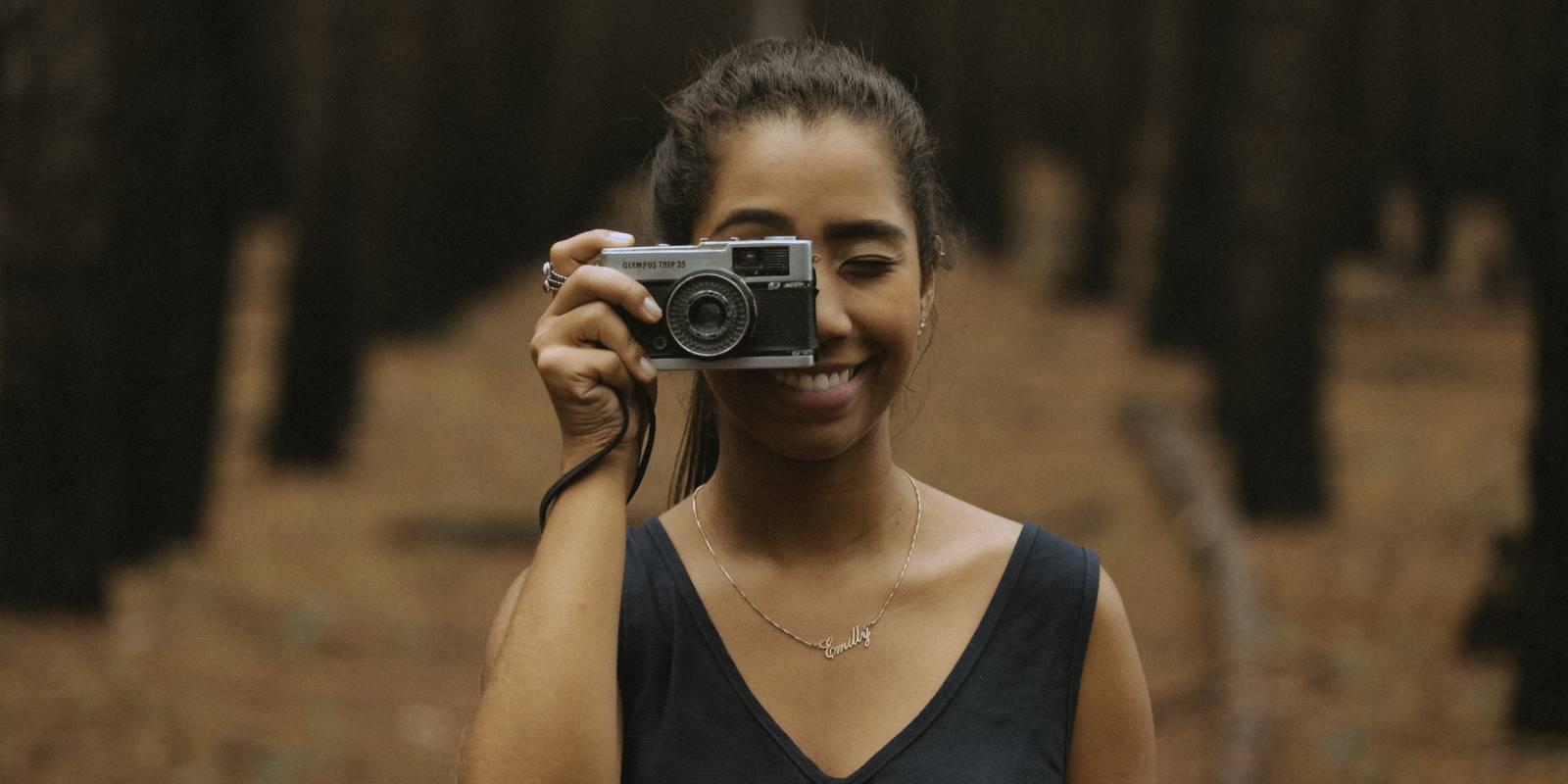There’s never been a better time to pick up a new hobby. Whether it’s cooking, arts and crafts, learning a new language, or writing your own book, enhancing your personal skills in something you love is never a waste of time. And if what you love involves capturing memories, seeing the art in natural landscapes, or working with cool new gadgets, studying photography should be at the top of your to-do list.
Want to know how to get started in photography? Read our guide on photography tips for beginners, how to start a photography blog and which photography equipment you’ll need to make the most of your new favorite pastime.

Basic Photography Tips For Beginners
While we mostly just use our phones to embrace our inner photographers, in reality, it takes a little more than that to go from a snap-happy amateur to a fully-fledged photography expert. And as they say, if it were easy, everyone would quit their day job and live off their hobby!
Just like any art, photography has to be learned and practiced—a lot. It is a trial and error process; we all start at the bottom and build our way up.
1. Choose The Right Photography Equipment
Before even starting to focus on what’s in front of you, you need to think more about what you’re using. Which photography equipment should you invest in when you’re doing photography as a hobby?
When you’re just getting started, you’ll want to choose user-friendly, simple photography equipment that is high-quality, but also easy to use. That doesn’t mean you need to go all out and instantly buy lighting, backdrops, and a whole bunch of props. At the very least, you will need a decent camera, a camera strap, an SD memory card with lots of storage space, a camera cleaning kit, and a photography bag. If you’re feeling really adventurous, a tripod is also a great purchase to make for achieving a smooth, still camera shot—especially when outdoors.
The tricky part of course, is deciding which camera to buy. As a beginner—or if you’re just doing photography as a hobby – a bridge camera is a great compromise to more expensive DSLRs and lenses. This will allow you to get an impressive zoom range but at a fraction of the cost of a DSLR camera with a telephoto lens. Most bridge cameras also have a variety of features, including full manual controls, shutter speed, aperture, ISO sensitivity, color balance, and metering. You can pick one up for as little as $100, which is a fair price to pay when you’re investing in your skillset.
2. Don’t Limit Yourself To One Style Of Photography
When thinking about how to get started in photography, you’ll likely be tempted to just focus on one type of photography that appeals to you. Of course, if you like portrait photography, then you should do that, but you should always keep your mind open to exploring other possibilities. This means working your way up and trying your hand at a variety of different styles, such as landscape, wildlife, still life, architecture, or even fashion.
A good place to start is by thinking about what you enjoy, or what brings out the emotional side of you. The more personal the photography is to you, the more likely you are to find your true muse.
3. Don’t Underestimate Photo Editing
While you’re learning how to take the perfect shot, how to master the art of angles, and how to capture the best lighting, you also need to know how to edit a photo once you’ve taken it. This is where post-processing comes in.
When you’re doing photography as a hobby or even just trying to grasp the most basic photography tips, you might underestimate the power of post-processing and editing—something that can truly make or break an image. Once you learn how to master software like Lightroom and Photoshop, your photography will become more like a start-to-end process, because you will automatically think about post-production.
If you want to get started using Photoshop, the best way to learn is to just play around, watch tutorials, and understand all the different tools at your disposal. Having the ability to edit and enhance your pictures can spell the difference between a great shot and a masterpiece.
4. Start A Photography Blog
What good is taking hundreds of mesmerizing and awe-inspiring photos if you’ve got nowhere to put them? By creating a blog, you can do much more than just upload your pictures. You can include captions and write descriptions that discuss the processes and techniques you used. Aside from being a great way to document your progress, it also gives like-minded people the boost to try it themselves.
If you’re wondering how to start a photography blog, you could first opt for creating a free blog on Wix or WordPress to initially build up your following and map out your blog style. Once you’ve noticed some traction on your blog, you might want to consider upgrading to a professional account. Starting a blog is an effective way to expand your network, gain followers, and work on your online presence. When you eventually upgrade to a paid offering, you can ditch the standard website handle and develop your very own website.
If you’re looking for a more powerful and unique way to display your photos around your own home, or if you’re looking for a way to share your photos with friends and family, you can’t go wrong with a Nixplay Frame. Not only will it allow you to show off your hard work in HD quality, but you’ll also be able to share it on several social media platforms. With Nixplay, you can arrange and organize your pictures in specific themed playlists, and you can even connect it to Google Home and Alexa devices so you can easily browse through your photos using just your voice! Displaying and sharing photos has never been more special.
5. Don’t Ignore Instagram
Speaking of social media, Instagram is one of the most obvious tools to utilize when you’re getting started in photography. If you’re wondering how to start a photography Instagram, or how to make the most of it, it’s not overly complicated. Once you’ve created your photography profile with a catchy handle, you can simply start uploading your photos. To gain more followers, try using popular hashtags, following lots of other relevant profiles, and linking out to your blog from your profile bio.
The higher the quality of your photos, the higher your engagement will be. And the more work you put into improving your Instagram presence, the better the outcome. That means spending a lot of your spare time liking, commenting, and reaching out to other Instagram users, posting at the busiest times of the day, creating effective captions, and most importantly, using the best filters and effects for your photos.
Hopefully our photography tips for beginners have encouraged you to get started. So, what are you waiting for? The camera is ready and the world is waiting! And if you’re looking for the best place to store your photos once you’ve switched the camera off, a Nixplay Frame is the way to go. Browse our collection today.


